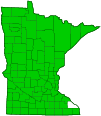grass-leaved goldenrod
(Euthamia graminifolia)
Conservation • Wetland • Description • Habitat • Ecology • Use • Distribution • Taxonomy
Description |
||
Grass-leaved goldenrod is a 12″ to 48″tall, erect, perennial forb that rises from a horizontal underground stem (rhizome). The roots and leaves exude toxic chemicals that inhibit the growth and survival of competing species (allelopathy). The stems are erect, leafy, and often branched in the upper quarter. They are either hairless or densely covered with short, spreading, stiff hairs. They are not glaucous. The linear, grass-like leaves are alternate and very long and narrow, 1½″ to 5″ long by ¼″ wide, 7 to 20 times as long as wide, becoming smaller as they ascend the stem. They are not folded. The larger leaves have three conspicuous veins, often with two fainter lateral veins. The smaller leaves usually have only a single conspicuous vein. They do not wrap around (sheath) the stem at the base. There are tiny brown to black resin dots on the leaf surface. The inflorescence is arranged in small, dense clusters at the end of the stem and side branches. The clusters are about 1¼″ clusters wide and have of 20 to 35 mostly stalkless flower heads. Together they form a broad inflorescence up to 11″ wide that is usually flat topped but may appear rounded. The flower head is smaller than most other goldenrods, only about ⅛″ across. It has 7 to 35 but usually 17 to 22 yellow ray florets and 3 to 13 but usually 5 to 7 yellow disk florets. |
||
Height |
||
12″ to 48″ |
||
Flower Color |
||
Yellow ray florets, yellow disk florets |
||
Similar Species |
||
Riddell’s goldenrod (Solidago riddellii) has grass-like, folded leaves that sheath the stem at the base. Great Plains flat-topped goldenrod (Euthamia gymnospermoides) leaves, even the largest leaves, have only a single central vein, and have a large number of resinous dots on the surface. The flower clusters have 10 to 21 flower heads. There are 10 to 14 ray florets in the flower head. |
||
Habitat |
||
Moist to dry. Meadows, prairies, roadsides, shores. Sandy soil. |
||
Ecology |
||
Flowering |
||
July to October |
||
Pests and Diseases |
||
|
||
Defense Mechanisms |
||
A study in 2002 showed that grass-leaved goldenrod inhibits the growth and survival of competing species by exuding toxic chemicals from its roots and leaves. |
||
Use |
||
|
||
Distribution |
||||
|
Sources |
|||
| 4/26/2023 | ||||
Nativity |
||||
Native |
||||
Occurrence |
||||
Common |
||||
Taxonomy |
|||
| Kingdom | Plantae (Plants) | ||
| Subkingdom | Pteridobiotina | ||
| Phylum | Tracheophyta (Vascular Plants) | ||
| Class | Magnoliopsida (Dicots) | ||
Order |
Asterales (Sunflowers, Bellflowers, Fanflowers, and Allies) | ||
Family |
Asteraceae (Sunflowers, Daisies, Asters, and Allies) | ||
| Subfamily | Asteroideae | ||
| Supertribe | Asterodae | ||
| Tribe | Astereae (asters and allies) | ||
| Subtribe | Gutierreziinae | ||
| Genus | Euthamia (grass-leaved goldenrods) | ||
The six species in the genus Euthamia were formerly placed in the genus Solidago. They were separated based on the arrangement of the flowers, glands on the leaves, and DNA. |
|||
Subordinate Taxa |
|||
Two varieties have been described, one more hairy and robust, one differing in the length to width ratio of the leaves. These characteristics overlap considerably and there is not much ecological or geographical separation. For these reasons, most taxonomists do not recognize any varieties of Euthamia graminifolia. |
|||
Synonyms |
|||
Euthamia graminifolia var. major Euthamia graminifolia var.graminifolia Euthamia graminifolia var.hirtella Solidago graminifolia Solidago graminifolia var. major |
|||
Common Names |
|||
common flat-topped goldenrod flat-top goldentop grass-leaved goldenrod lance-leaved goldenrod |
|||
Glossary
Allelopathy
The release of a chemical toxin by one plant to inhibit the growth or germination of nearby competing plants.
Glaucous
Pale green or bluish gray due to a whitish, powdery or waxy film, as on a plum or a grape.
Linear
Long, straight, and narrow, with more or less parallel sides, like a blade of grass.
Rhizome
A horizontal, usually underground stem. It serves as a reproductive structure, producing roots below and shoots above at the nodes.
Sheath
The lower part of the leaf that surrounds the stem.
Visitor Photos |
|||||
Share your photo of this plant. |
|||||
| This button not working for you? Simply email us at info@MinnesotaSeasons.com. Attach one or more photos and, if you like, a caption. |
|||||
|
|||||
MinnesotaSeasons.com Photos |
|||||
Plant |
|||||
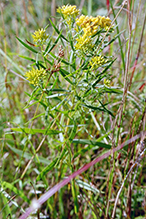 |
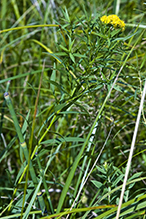 |
||||
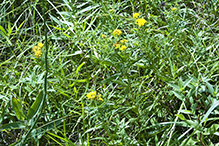 |
|||||
Inflorescence |
|||||
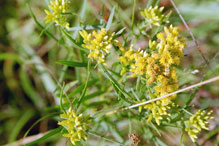 |
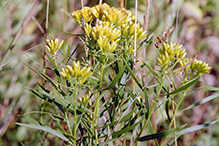 |
||||
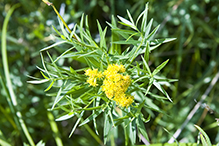 |
|||||
Flower Heads |
|||||
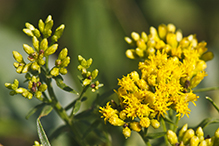 |
|||||
Leaves |
|||||
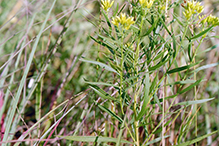 |
|||||

Slideshows |
||
| Flat-top Goldenrod (Euthamia graminifolia) Andree Reno Sanborn |
||
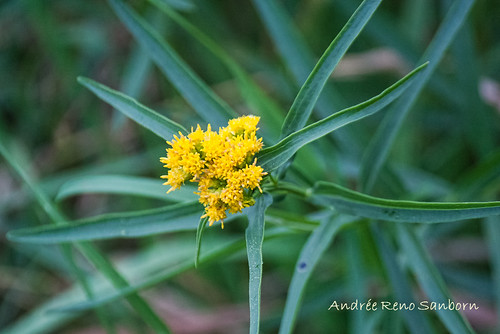
|
||
| Solidago graminifolia COMMON GRASS-LEAVED GOLDENROD Frank Mayfield |
||
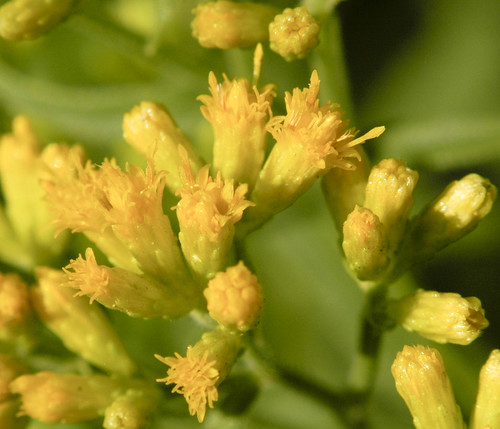
|
||

Visitor Videos |
|||
Share your video of this plant. |
|||
| This button not working for you? Simply email us at info@MinnesotaSeasons.com. Attach a video, a YouTube link, or a cloud storage link. |
|||
Other Videos |
|||

Visitor Sightings |
|||||
Report a sighting of this plant. |
|||||
| This button not working for you? Simply email us at info@MinnesotaSeasons.com. Be sure to include a location. |
|||||
|
|||||
MinnesotaSeasons.com Sightings |
|||||
Charles A. Lindbergh State Park Felton Prairie SNA, Shrike Unit Lake Alexander Woods SNA, South Unit Margherita Preserve-Audubon Prairie Northern Tallgrass Prairie NWR, Hoffman Unit Northern Tallgrass Prairie NWR, Pavia Unit Northern Tallgrass Prairie NWR, Spieker Unit Pembina Trail Preserve SNA, Crookston Prairie Unit Pembina Trail Preserve SNA, Pembina Trail Unit Richard M. & Mathilde Rice Elliott SNA |
|||||

|
Created: Last Updated: © MinnesotaSeasons.com. All rights reserved. |
